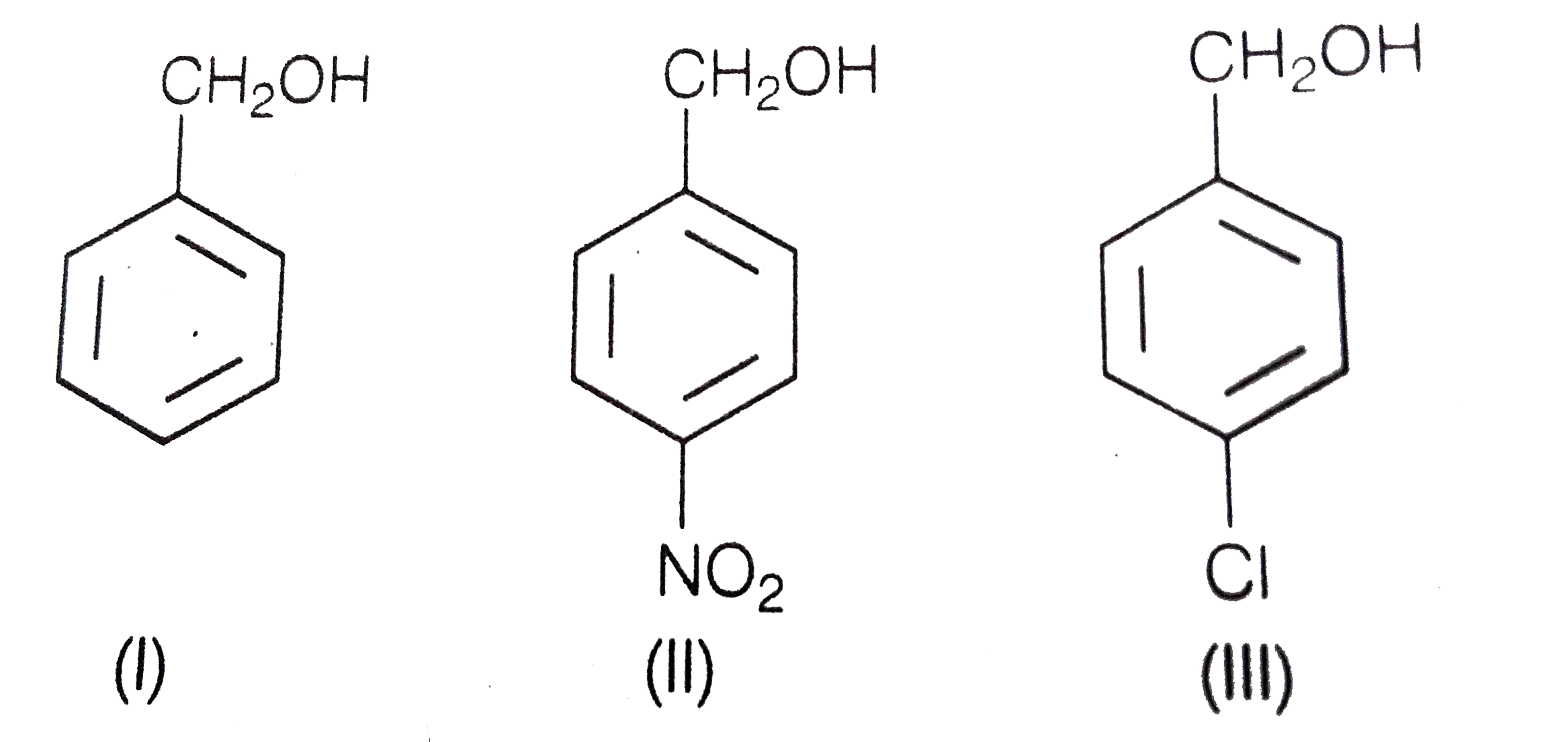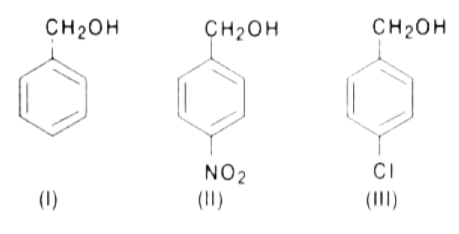The correct increasing order of extent of hydrolysis is
CCl4<MgCl2<AlCl3<SiCl4<PCl5
CCl4<AlCl3<MgCl2<PCl5<SiCl4
CCl4<SiCl4<PCl5<AlCl3<MgCl2
CCl4<PCl5<SiCl4<AlCl3<MgCl2
The correct Answer is:A
To determine the correct increasing order of the extent of hydrolysis for the given compounds, we need to analyze the hydrolysis behavior based on the charge of the metal ions involved and their ability to form stable hydrolysis products.
1. Understanding Hydrolysis: Hydrolysis is a reaction where water molecules interact with a metal ion, leading to the formation of hydroxide ions (OH⁻) and the release of other ligands (like Cl⁻) from the metal complex. The extent of hydrolysis depends on the charge and size of the metal ion.
2. Identifying the Compounds: The compounds we are considering are typically metal chlorides. For example, we might have:
- MgCl₂ (magnesium chloride)
- AlCl₃ (aluminum chloride)
- SiCl₄ (silicon tetrachloride)
- PCl₅ (phosphorus pentachloride)
3. Analyzing Metal Ion Charges: The charge on the metal ions plays a crucial role in hydrolysis:
- Mg²⁺ has a +2 charge.
- Al³⁺ has a +3 charge.
- Si⁴⁺ has a +4 charge (as in SiCl₄).
- P⁵⁺ has a +5 charge (as in PCl₅).
4. Comparing Hydrolysis Extents: Generally, the higher the positive charge on the metal ion, the greater the tendency for hydrolysis due to stronger attraction of water molecules:
- SiCl₄ (Si⁴⁺) will undergo hydrolysis but to a lesser extent than AlCl₃ (Al³⁺).
- AlCl₃ (Al³⁺) will undergo more hydrolysis than MgCl₂ (Mg²⁺).
- PCl₅ (P⁵⁺) will undergo the most hydrolysis due to the highest charge.
5. Establishing the Order: Based on the analysis:
- CCl₄ (no hydrolysis, as C has no vacant orbitals)
- MgCl₂ (least hydrolysis)
- AlCl₃ (more hydrolysis)
- SiCl₄ (more hydrolysis than AlCl₃)
- PCl₅ (most hydrolysis)
6. Final Increasing Order: Therefore, the correct increasing order of the extent of hydrolysis is:
- CCl₄ < MgCl₂ < AlCl₃ < SiCl₄ < PCl₅
- MgCl₂ (magnesium chloride)
- AlCl₃ (aluminum chloride)
- SiCl₄ (silicon tetrachloride)
- PCl₅ (phosphorus pentachloride)
- Mg²⁺ has a +2 charge.
- Al³⁺ has a +3 charge.
- Si⁴⁺ has a +4 charge (as in SiCl₄).
- P⁵⁺ has a +5 charge (as in PCl₅).
- SiCl₄ (Si⁴⁺) will undergo hydrolysis but to a lesser extent than AlCl₃ (Al³⁺).
- AlCl₃ (Al³⁺) will undergo more hydrolysis than MgCl₂ (Mg²⁺).
- PCl₅ (P⁵⁺) will undergo the most hydrolysis due to the highest charge.
- CCl₄ (no hydrolysis, as C has no vacant orbitals)
- MgCl₂ (least hydrolysis)
- AlCl₃ (more hydrolysis)
- SiCl₄ (more hydrolysis than AlCl₃)
- PCl₅ (most hydrolysis)
- CCl₄ < MgCl₂ < AlCl₃ < SiCl₄ < PCl₅
Topper's Solved these Questions
- BOOK - VK JAISWAL ENGLISHCHAPTER - CHEMICAL BONDING (ADVANCED)EXERCISE - Level 377videos
CHEMICAL BONDING (ADVANCED)
- BOOK - VK JAISWAL ENGLISHCHAPTER - CHEMICAL BONDING (ADVANCED)EXERCISE - ONE OR MORE ANSWER IS/ARE CORRECT78videos
CHEMICAL BONDING (ADVANCED)
- BOOK - VK JAISWAL ENGLISHCHAPTER - CHEMICAL BONDING (ADVANCED)EXERCISE - SUBJECTIVE PROBLEMS64videos
CHEMICAL BONDING (ADVANCED)
- BOOK - VK JAISWAL ENGLISHCHAPTER - CHEMICAL BONDING (BASIC)EXERCISE - SUBJECTIVE PROBLEMS54videos
CHEMICAL BONDING (BASIC)
Similar Questions
Knowledge Check
- Question 1 - Select One
Choose the correct increasing order of density of the following compounds.
AC3H7Cl<C3H7i<CH2Cl2<Cl2BC3H7I<C3H7Cl<CH2CL2<Cl4CC3H7i<C3H7Cl<Cl4<CH2Cl2DCCl34<CH2Cl2<C3H7i<C3H7Cl - Question 2 - Select One
What is the correct increasing order of the pH of the following solutions with equal concentrations?
AHCl<NaOH<CH3COOHBHCl<CH3COOH<NaOHCNaOH<HCl<CH3COOHDCH3COOH<NaOH<HCl
The correct increasing order of acidity is:
View SolutionThe correct increasing order of trans-effect of the following species is
View SolutionThe correct increasing order of trans-effect of the following species is
View SolutionThe correct increasing order of the reactivity of halides for SN1 reaction is:
View SolutionMark the correct increasing order of reactivity of the following compounds with HBr/HCl.
 View Solution
View SolutionMark the correct increasing order of reactivity of the following compounds with HBr/HCI.
 View Solution
View Solution

